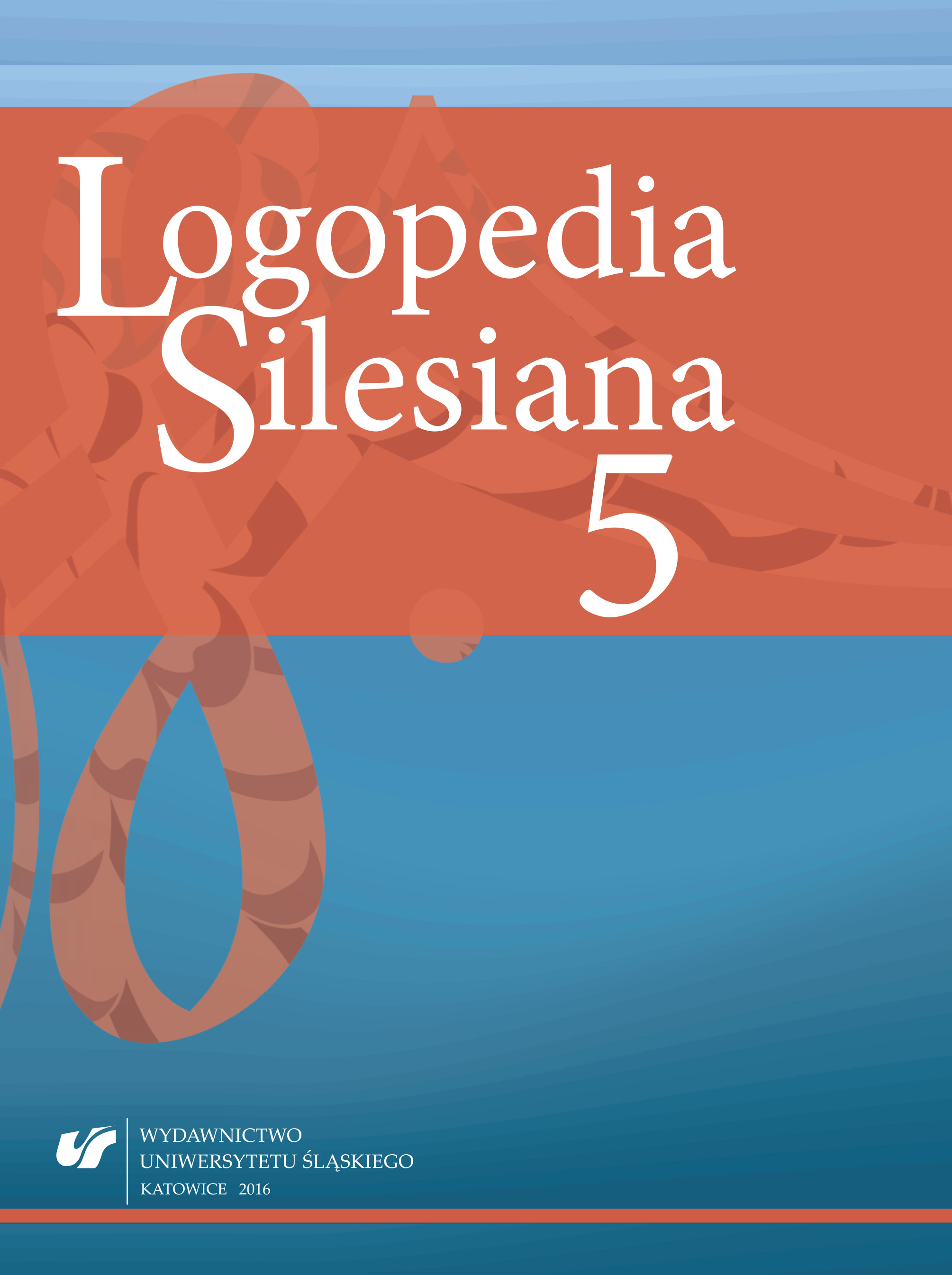Aglioti S., Peru A., Smania N.: Frames of references for mapping tactile stimuli in brain‑damages patients. “Journal of Cognitive Neuroscience” 1999, No. 11, p. 67–79.
Google Scholar
Diagnoza neuropsychologiczna. Metodologia i metodyka. Red. A. Borkowska, E. Szepietowska. Lublin, Wydaw. UMCS 2000.
Google Scholar
Gurański K., Słotwiński K., Podemski R.: Prozodia mowy w niedokrwiennym udarze mózgu. „Udar mózgu” 2008, nr 10 (2), s. 96–103.
Google Scholar
Jóźwicka M., Głąbiński A.: Poszukiwanie biomarkerów zapalnych udaru niedokrwiennego mózgu. „Aktualności Neurologiczne” 2011, nr 11 (2), s. 106–110.
Google Scholar
Kikkert M., Ribbers G., Koudstaal P.: Alien hand syndrome in stroke: case report of 2 cases and review of the literature. “Archives of Physical Medicine and Rehabilitation” 2006, No. 87, p. 728–732.
Google Scholar
Koc‑Kozłowiec B.: Komunikowanie się chorych z afazją po udarze mózgu. „Udar mózgu” 2005, nr 7 (2), s. 66–70.
Google Scholar
Kucharska‑Pietura K., Klimkowski M.: Perception of facial affect in chronic schizophrenia and right brain damage. “Acta Neurobiologica Experimentalis” 2002, No. 62, p. 33–34.
Google Scholar
Kucharska‑Pietura K. et al.: The Perception of Emotional Chimeric Faces in Schizophrenia: Further Evidence of Right Hemisphere Dysfunction. „Neuropsychiatry, Neuropsychology & Behavioral Neurology” 2002, No. 15 (2), p. 72–78.
Google Scholar
Laksminarayana K. et al.: The effect of spectral manipulations on the identification of affective and linguistic prosody. “Brain and Language” 2003, No. 84, p. 250–263.
Google Scholar
Moro V., Zampini M., Aglioti S.: Changes in spatial position of hands modify tactile extinction but not disownership of contralesional hand in two right brain‑damaged patients. „Neurocase” 2004, No. 10, p. 437–443.
Google Scholar
Pąchalska M.: Kompleksowy model rehabilitacji chorych z ogniskowym uszkodzeniem mózgu i afazją całkowitą. Kraków, Wydaw. AWF 1986.
Google Scholar
Pooyania S., Mohr S., Gray S.: Alien hand syndrome: a case report and description to rehabilitation. “Disability and Rehabilitation” 2011, No. 33 (17–18), p. 1715–1718.
Google Scholar
Prusiński A.: Wprowadzenie. Udar mózgu – jeden z czołowych problemów współczesnej medycyny. W: Niedokrwienne udary mózgu. Red. A. Prusiński et al. Bielsko‑Biała, Alfa Medica Press 1999, s. 9–24.
Google Scholar
Smania N., Aglioti S.: Sensory and spatial components of somaeshtetic deficits following right brain damage. “Neurology” 1995, No. 45, p. 1725–1730.
Google Scholar
Śpiewla Ł., Herzyk A.: Objawy pomijania połowiczego u pacjentów ze stronnym uszkodzeniem mózgu. W: Neuropsychologia kliniczna. Wybrane zagadnienia. Red. M. Klimkowski, A. Herzyk. Lublin, Wydaw. UMCS 1994, s. 75–89.
Google Scholar
Wojtan A., Wojtan S.: Występowanie zespołu zaniedbywania połowiczego u chorych po przebytym udarze niedokrwiennym mózgu. „Problemy pielęgniarstwa” 2009, nr 17 (4), s. 328–334.
Google Scholar
Vignemont F. de: Habeas Corpus: The Sense of Ownership of One’s Own Body. „Mind & Language” 2007, No. 22 (4), s. 427–449.
Google Scholar



 10.31261/LOGOPEDIASILESIANA
10.31261/LOGOPEDIASILESIANA